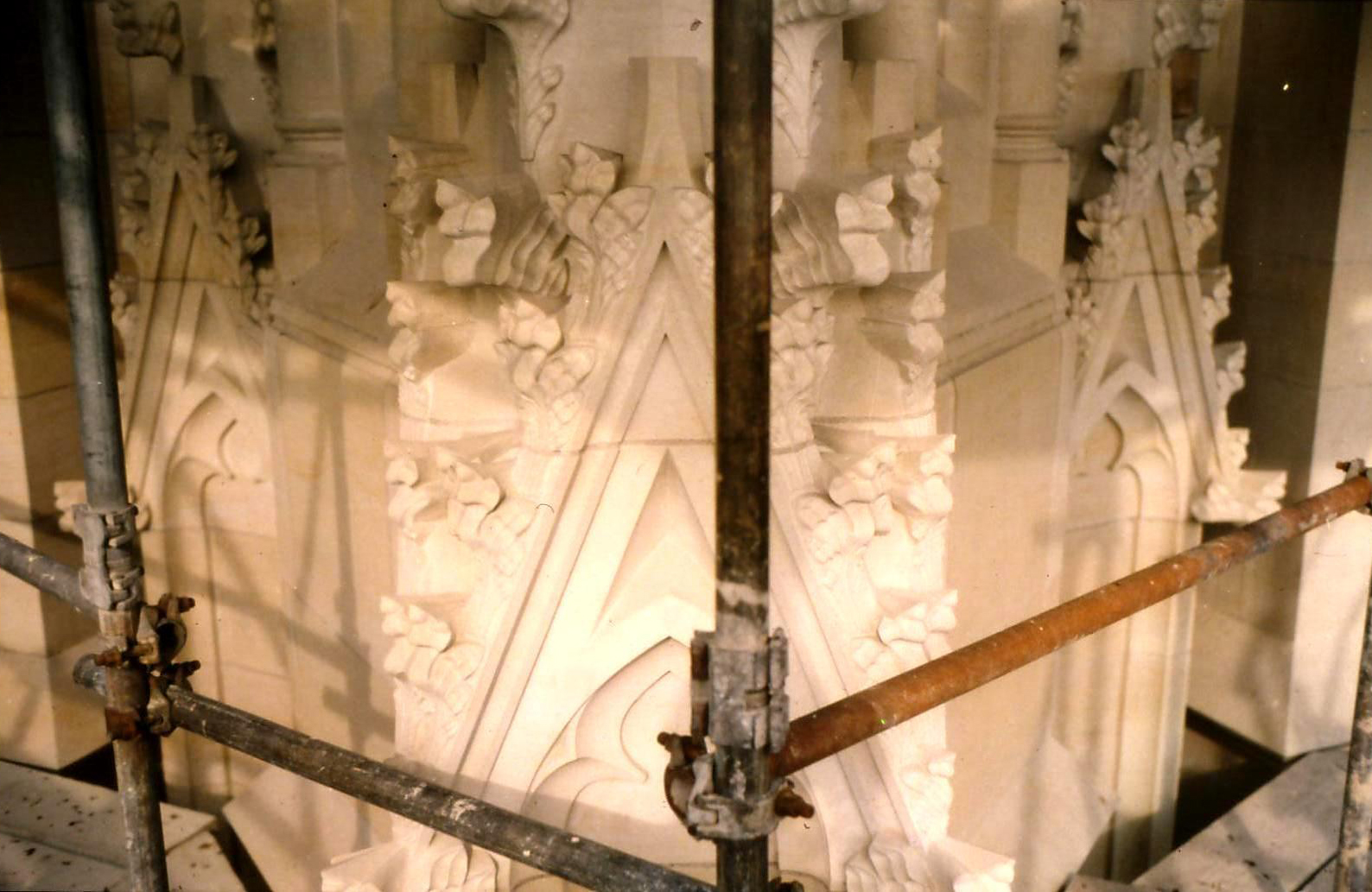

Soest’s “green sandstone”, actually a sandy limestone, is especially problematic in the gothic towers of the Wiesenkirche; (however, these are not readily transferable to other areas). In maintenance work of 1930, almost the entire decoration of the tower shafts was cut off, for reasons that included avoiding falling rocks.
Approximately fifty years later, strong continual damage by weathering of the tower stems required extensive restoration, which began in 1987.
A particular difficulty was presented by the stone extraction from the towers. For this purpose, a new technology was developed after 1993, leading to the use of diamond wire saws. The theoretical basis for this is the exact measurement of directions based on tower geometry. The method for producing the stones takes place with a combination of industrial technology and stonemasonry techniques and/or technology, each in its pure form. In the cathedral workshop of the masons’ lodge itself, in addition to the elaborate manual production of foliage work (crockets, finials, etc.), more complex profile work is carried out. The following four images display the relocation of a tracery restored in Obernkirchen sandstone and its curved soffit through to the fitted final stone, interlocked layer by layer with the remaining original substance made from green sandstone.

View of the Wimpergecke of the 1st zone, which marks the formation of the approximately 18 m high free standing, giant pinnacle from the corner of the tower, weighing over 70 tonnes.
The original green stone has been destroyed, and with it the precious Gothic adornment lost. This happened, on the one hand, due to the so-called ravages of time, That is to say, by weathering, and also by the loss of important strength in the stone material. On the other hand, human interference throughout the course of history was also responsible for the loss of the most valuable constituent.
By viewing a few of the original forms – of which, fortunately, sufficient fragments still exist – solid information can be deduced about the original shapes. The image above shows the restoration of Wimpergecke of the 1st zone, shifted to the southern tower following reconstruction. Only Obernkirchen sandstone may be used, as recommended by those who gained vital knowledge during construction of the towers in the 19th century when changing the helmet tracery stone.


Detailed image of foliage in the 1st Wimpergzone
